TechRadar Verdict
The Anker Nebula Mars 3 is a mighty alternative to the many small, cheap models in the portable projector market, though its commitment to portability makes it a poor rival for home theater projectors.
Pros
- +
Bright for a portable projector
- +
Long-running battery
- +
Robust build quality
Cons
- -
Performance falls short for home theater use
- -
Mono audio
- -
Dated smart TV platform
Why you can trust TechRadar
Anker Nebula Mars 3: two-minute review
If you’ve been looking for a projector you can wow your friends with, the Anker Nebula Mars 3 might be the one. Despite looking like a monster-sized flashlight, the Nebula Mars 3 is a portable projector designed for use both on the go and at home. To that end, it has a built-in battery that lets it operate at full brightness for upwards of two hours, plus the Android TV smart TV platform for streaming and fairly beefy speakers, though they regrettably play in mono. It’s well constructed, and works effectively, letting you set it down and get up and running quickly.
Where the Anker Nebula Mars 3 really impresses is its brightness, which knocks it out of the park compared to most other battery powered examples of the best portable projectors. It’s not enough to challenge daylight, but it’ll sizzle at night. At just over $1,000, it has competition, and you can also find 4K models around that price, though few have the portability on offer here. You can also get better color from triple-laser options like the LG CineBeam Q or JMGO N1S Pro, albeit at a lower brightness for the LG and no on-the-go use for the JMGO.
If you’re planning to do most of your viewing at home, it’s probably worth getting a projector that skips the battery and puts more effort into picture quality. But if you want a robust all-in-one theater you can tote anywhere, the Anker Nebula Mars 3 is a commendable option.
Anker Nebula Mars 3 review: price and release date
- Release date: July 2023
- Price: $1,099 (around £850 / AU$1,645)
The Anker Nebula Mars 3 launched in 2023 and is now readily available in the US for $1,099. It can occasionally be found for less, however, and was $50 off at the time of writing.
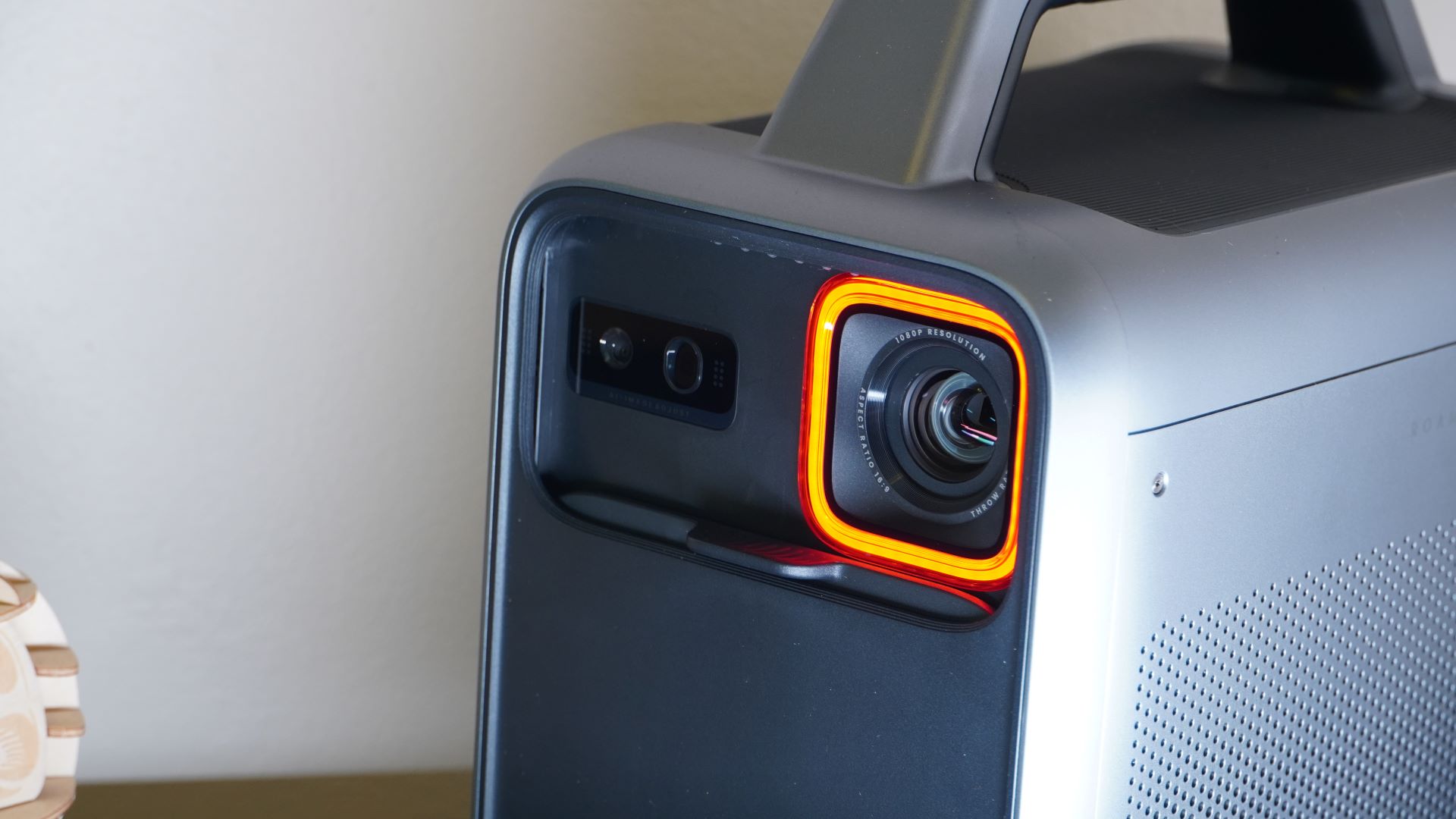
Anker Nebula Mars 3 review: Specs
| Screen sizes supported: | 30-200 inches |
| Brightness (specified): | 1,000 lumens |
| HDR support: | NA |
| Optical technology: | LED DLP |
| Smart TV: | Android TV |
| Connections: | HDMI, USB-A, USB-C, 3.5mm audio out, DC power in |
| Dimensions: | 10.2 x 1.97 x 6.3 inches (H x W x D) |
| Weight: | 9.9 pounds |

Anker Nebula Mars 3 review: design and features
- Built for portability and durability
- Convenient on-device controls
- Built-in speakers and Android TV operating system
The Anker Nebula Mars 3 follows Anker’s Nebula series design language, bearing considerable resemblance to the Nebula Cosmos 4K SE projector. That said, there are considerable differences that make the Nebula Mars 3 stand out.
This model is built for more of a rough-and-tumble, on-the-go lifestyle. It features a hardened case that can withstand half-meter drops and has IPX3 water resistance. The front has a sliding lens cover and the rear includes a rubber cover over the ports. A sizable, hard handle stretches across the top of the projector, extending from the front to the back. While it includes a remote control, the handle also has built-in controls for volume and navigation of the projector’s onboard operating system. Neither of these control options is quite perfect though, as the remote is fairly limited in what you can access with a single press and the built-in buttons lack many of the typical controls for navigating the projector’s Android TV smart TV interface.
A key part of the portable nature of the Anker Nebula Mars 3 is its ability to operate outdoors. To that end, the projector integrates a beefy battery geared up to run for anywhere from 2 hours at full blast to 5 hours in a dimmer Eco mode. To help you keep track of power, the handle has a ring of lights that display battery level. The projector can also double as a Bluetooth speaker or a flashlight. A three-speaker built-in audio system resides near the front. It can pump out a good deal of sound, though only in mono and the dynamics are fairly weak. Meanwhile, an LED light bar sits along the rear, stretching out above a large exhaust vent and below the port cover.
Since the Anker Nebula Mars 3 isn’t designed to have a permanent home, it has a small, adjustable stand underneath to help angle it up at projection surfaces wherever it’s ultimately set up. It also features a quick and effective system for automatically adjusting image focus, keystone, and framing.
The projector’s Android TV 11 smart TV system is a little dated, but still effective as a streaming platform. Like many other projectors, though, it doesn’t get the Play Store version of Netflix, instead relying on a sideloaded version that offers a generally sub-par experience. If you’re off the grid and don’t have internet, the projector has a USB-A port and supports local media playback.
To upgrade the audio experience, you can wire it up to external powered speakers using the AUX port or wirelessly pair it to a Bluetooth speaker.
- Design and features score: 4/5
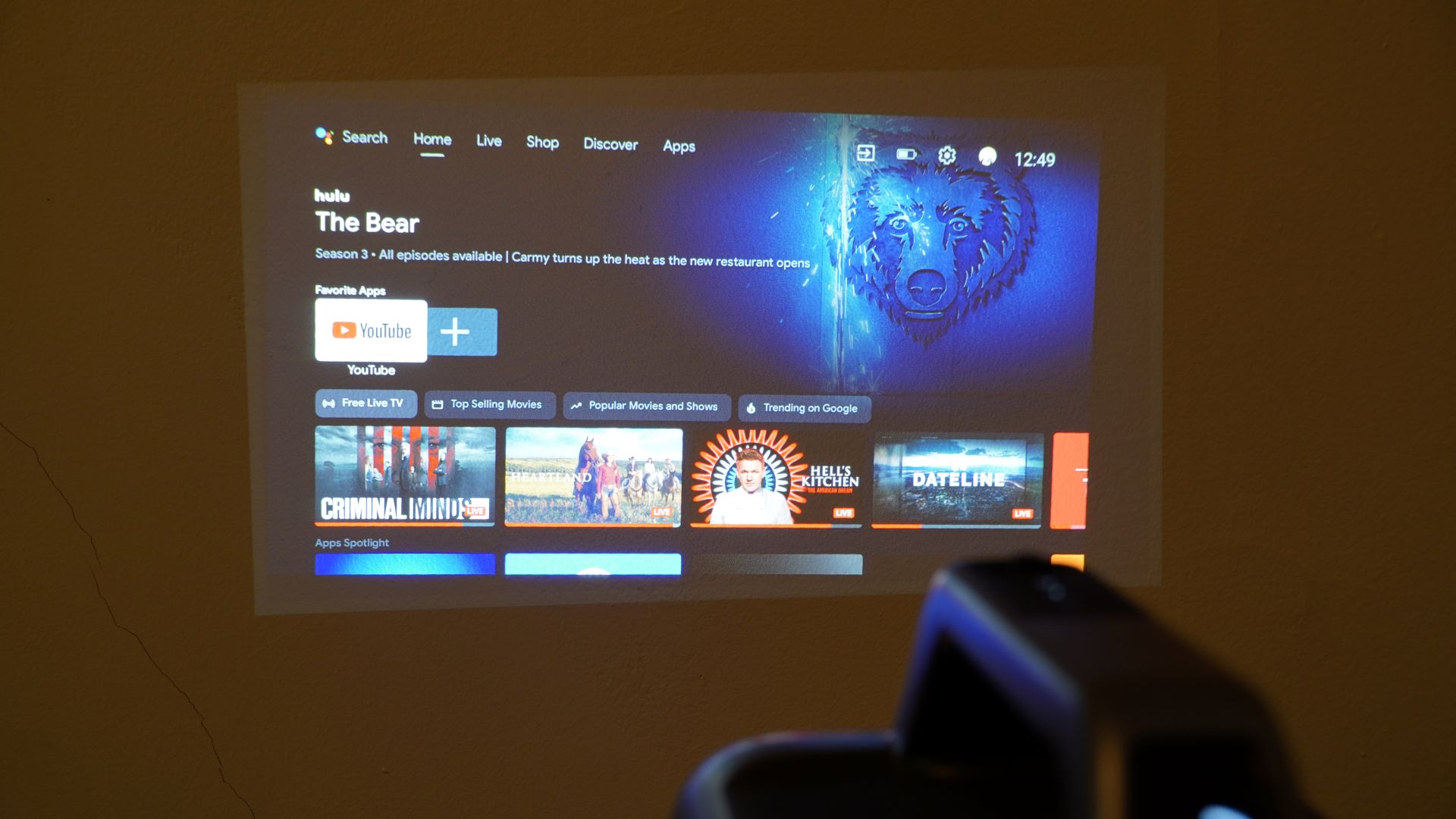
Anker Nebula Mars 3 review: picture quality
- Good, but not exceptional picture
- Decent color and detail
- Enough battery power for a 2-hour-plus movie
The Anker Nebula Mars 3 features an LED DLP projection system rated for 1,000 lumens and 1080p resolution. That’s about what should be expected from a projector sitting at around $1,000.
Anker’s battery powered portable has a good-looking picture, but not an exceptional one. It isn’t the type of projector you’ll want if you’re viewing in a bright room, since its 1,000 lumens just aren’t enough to handle much ambient light. You might get by if you’re watching bright cartoons, but you really should be viewing with it in a dark space, and that extends to the outdoors as well. Controlling ambient lighting outdoors is even more difficult than indoors, and if you’re expecting a good viewing experience with lots of urban lighting present, you’ll be disappointed. That said, if you’re in a more rural area without much light pollution, the Anker Nebula Mars 3 should provide ample brightness after sunset.
The color you’ll get from the Anker Nebula Mars 3 is decent, but no match for triple-laser portable projectors like the LG CineBeam Q. It doesn’t feel utterly lacking or poorly managed, and a show like Ru Paul’s Drag Race still had plenty of visual spark when I viewed it. Colors have modest vibrance, but just don’t get the same level of pop I’ve seen from HDR-capable projectors reaching toward 100% coverage of the UHDA-P3 color space. The same is true of its resolution. At a projected image size of around 65 inches, the projector's 1080p image looks reasonably crisp, but go far above that and you will seeing more softness unless you sit further back. A larger image will also show an artifact of the projector’s DLP chip, which shows up as noticeable dithering (an effect like writhing small dots) when displaying dark colors over a large portion of the screen.
The projector has a motion smoothing setting buried slightly in the settings menu under the label MEMC that is set to on by default. While it can smooth out certain motions, it creates all sorts of distracting effects, especially in action sequences like those in Gladiator. It’s worth turning off, which results in more natural motion.
Many of the image trade-offs are a result of Anker needing to squeeze a battery in for the $1,099 price. And the battery makes it worth it. At full brightness, the Nebula Mars 3 was able to run for the entirety of a two-hour movie at 50% volume with a little over 20% charge to spare, which let it go for nearly 30 minutes longer. Annoyingly, if you’re nearing the end of your movie or show and the battery power starts to get low, your experience will be thoroughly interrupted by several low-battery warnings in a window that occupies a large portion of the display.
- Picture quality score: 3/5
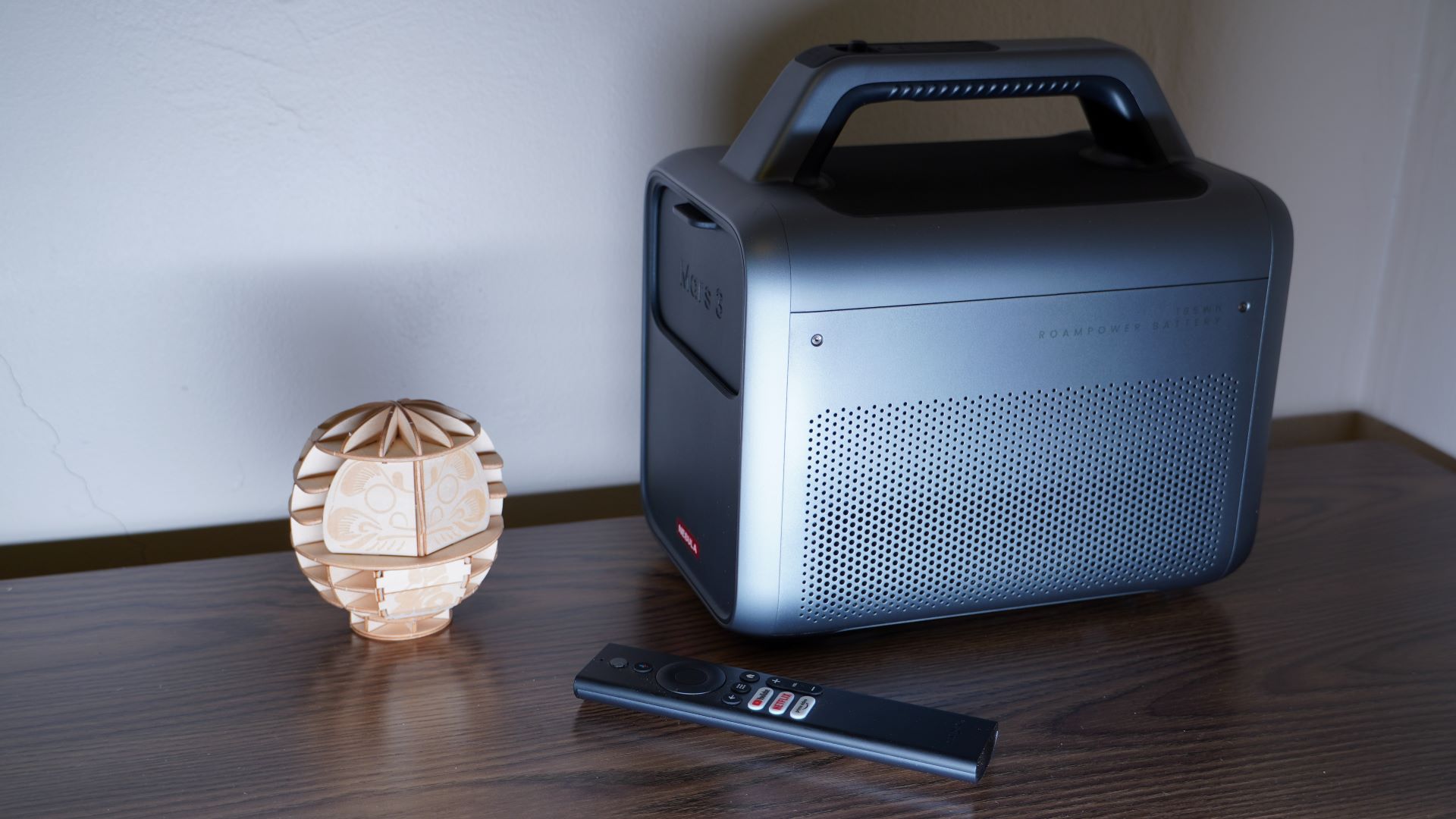
Anker Nebula Mars 3 review: value
- Great for portable use
- Brighter than other compact portables
- Better options for picture quality, but not portability
The Anker Nebula Mars 3 is an interesting package. It’s not a great home theater projector for the money, as there are far more appealing options available in the same ballpark. But it’s an overall decent projector and a powerful portable one. The Nebula Mars 3 is quick to set up, and can run for hours at a time. It’s a knockout next to something like the Samsung The Freestyle 2nd Gen, which has a portable setup with an optional battery pack but isn’t nearly as bright.
A competent projector you can bring anywhere and easily get up and running is something special, and the Anker Nebula Mars 3 nails the concept. It’s built to withstand surprises and has clever elements (like the lens cover and waterproofing) that let you easily grab it and go without worrying about a protective case.
- Value score: 4/5
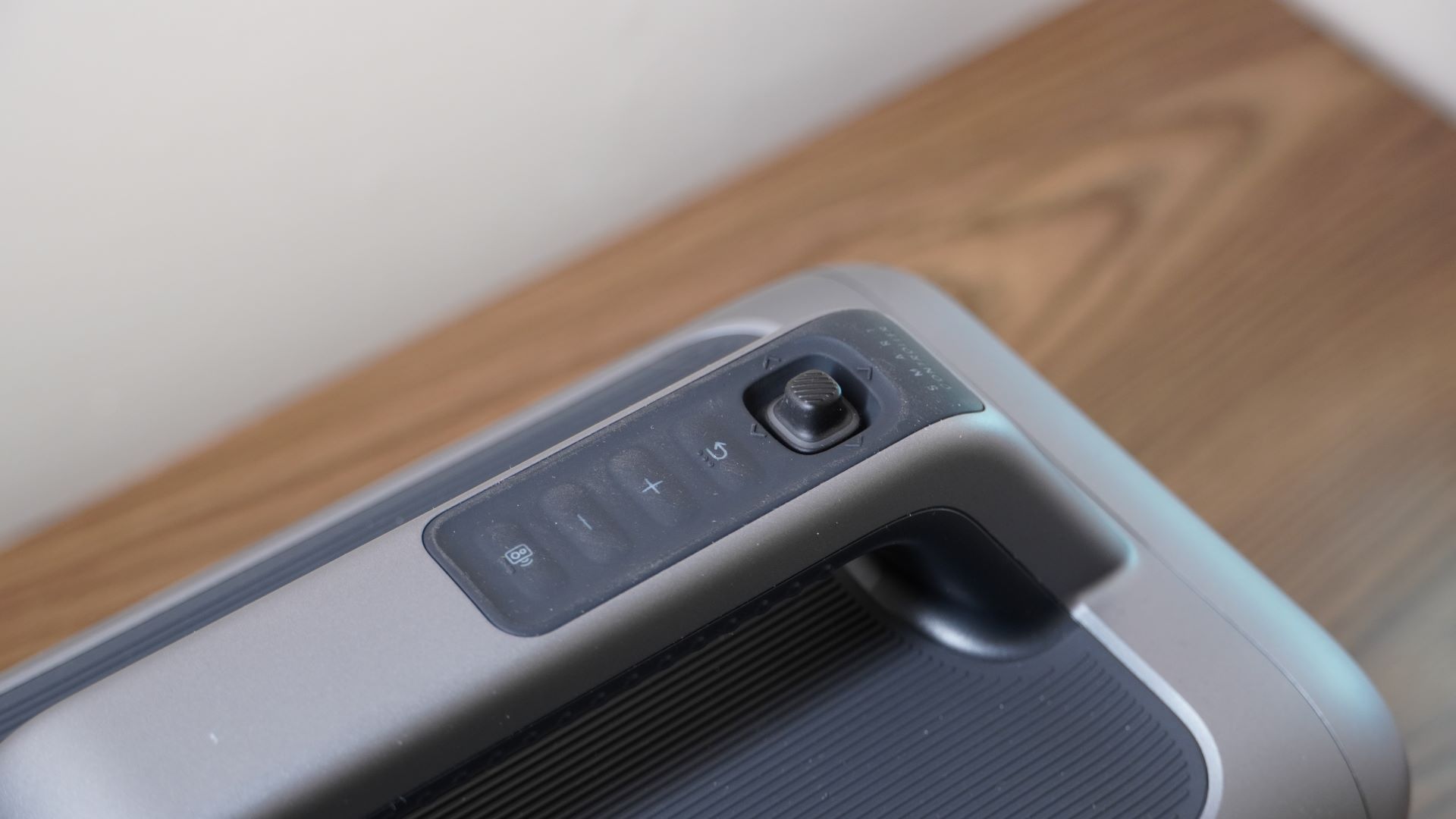
| Attributes | Notes | Rating |
|---|---|---|
| Design and features | The Anker Nebula Mars 3 has a projection system, Android TV, speakers, a built-in battery, and a light. That’s a lot to get in one package. | 4/5 |
| Picture quality & performance | A decent projector, but far from a brilliant one. It doesn’t look killer at extra-large sizes, and the color saturation is modest. | 3/5 |
| Value | Strikes a special value with its portability and is a serious threat against other portable options, with a big battery, loud speakers, robust design, and good brightness. | 4/5 |
Should I buy the Anker Nebula Mars 3?
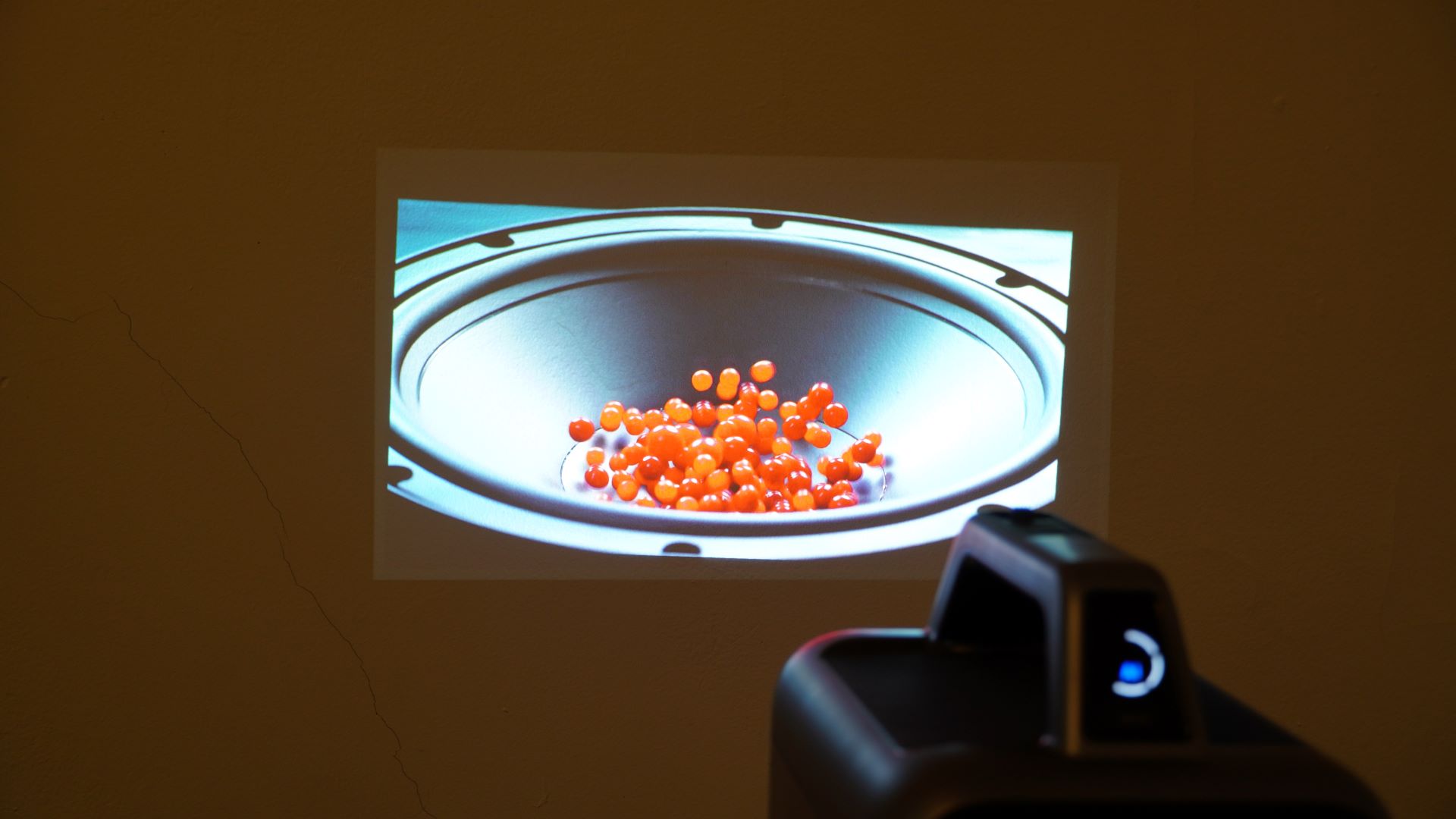
Buy it if...
You want an easy on-the-go projector: The key feature of the Anker Nebula Mars 3 is its ability to operate just about anywhere. Its handle is ready for travel and its battery lets it run for upwards of 2 hours at full brightness.
You’re rough with your gadgets: The Nebula Mars 3 isn’t indestructible, but it‘s a good deal more durable than other projectors. With hardware that can withstand 0.5-meter drops and rain, you can be a little more rough with this device.
You’re outdoorsy: The Nebula Mars 3 isn’t just a projector. It has a lamp that can come in handy at a campsite, and if you're not watching something, the built-in speaker can serve as a Bluetooth speaker. You can even use it as a power source for charging other electronics.
Don’t buy it if…
You’re never taking it outdoors: The Nebula Mars 3 is decent, but not exceptional when it comes to home theater viewing. You can easily get a cheaper projector with equivalent picture quality.
You want a really big, bright picture: The Nebula Mars 3’s 1080p resolution and 1,000 lumens brightness don’t really cut it for big-screen viewing unless you’re not picky about picture detail and have a dark viewing space.
You want great built-in sound: The Nebula Mars 3 has some hard limits when it comes to audio. Its built-in speakers are regrettably mono and there’s no optical digital or eARC ports to tap into higher-quality sound devices.
Also consider...
| Header Cell - Column 0 | Anker Nebula Mars 3 | Samsung The Freestyle 2nd Gen | LG CineBeam Q | Xgimi Horizon Ultra |
|---|---|---|---|---|
| Price: | $1,099 | $799 | $1,299 | $1,699 |
| Screen sizes supported: | 30 to 200 inches | 30 to 100 inches | 50 to 120 inches | 40 to 200 inches |
| Brightness (specified): | 1,000 lumens | 230 ANSI lumens | 500 ANSI lumens | 2,300 ISO lumens |
| HDR support | NA | NA | HDR10, HLG | HDR10, HLG, Dolby Vision |
| Optical technology: | LED DLP | LED DLP | RGB laser DLP | LED+laser DLP |
| Smart TV: | Android TV | Tizen | webOS | Android TV |
| Connections: | 1x HDMI, 1x 3.5mm | Micro-HDMI, USB-C (power) | HDMI, USB type-C (display, power) | 2 x HDMI (1 with eARC) |
LG CineBeam Q
The CineBeam Q is absolutely tiny next to the Anker Nebula Mars 3, and it’s nowhere near as bright, but benefits from a far more colorful projection system, 4K visuals, and a much better streaming platform. For viewing in the dark, it can work wonders.
Read our full LG CineBeam Q review
Samsung The Freestyle 2nd Gen
Samsung’s The Freestyle 2nd Gen is a smaller, somewhat cheaper alternative, though that depends on any discounts. It has greater portability size-wise, but requires an external battery pack. Next to the Anker Nebula Mars 3, it’s kind of a toy projector.
Read our full Samsung The Freestyle 2nd Gen review
Xgimi Horizon Ultra
The Xgimi Horizon Ultra is just about as compact, but isn’t portable. Instead, you get a much higher class of home theater projector. It’s stylish, bright, colorful, and just an altogether more competent machine for more static setups.
Read our full Xgimi Horizon Ultra review
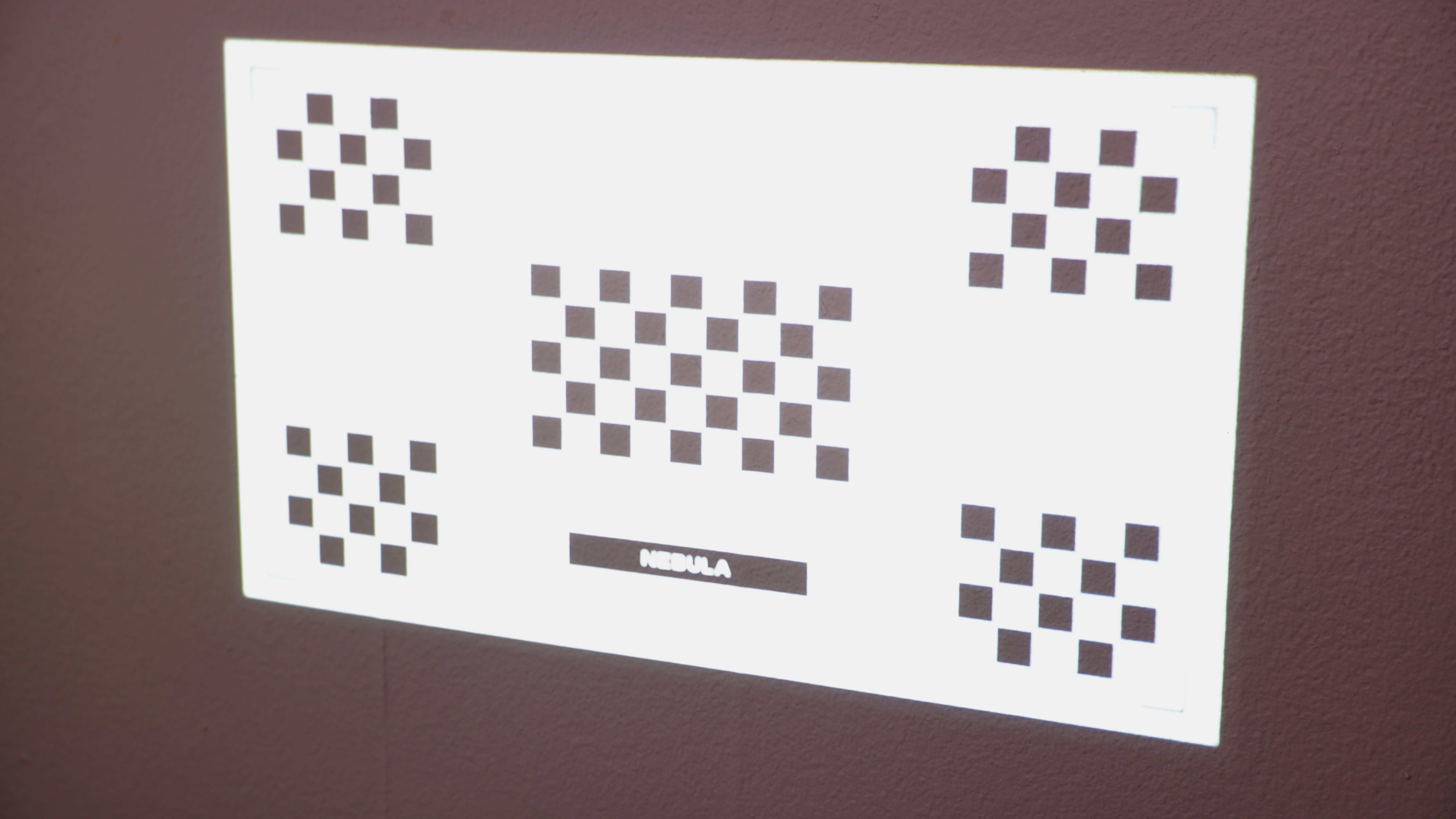
How I tested the Anker Nebula Mars 3
- Tested at home in multiple, real-world viewing conditions
- Presented the display with a variety of media and formats
- I have tested numerous projectors and displays over the last half-decade
I tested the Anker Nebula Mars 3 at home, in real-world conditions. This saw it faced with ambient light coming in from numerous windows, in-room lighting, as well as ambient noise that both the projector and speaker systems had to overcome. The projector was tested both against a bare, white wall and an Akia Screens CineWhite screen. It was presented with streamed content, both HDR and non-HDR.
My testing evaluates the projector’s performance with respect to its price and competition from other models I and colleagues at TechRadar have tested.
I have been testing projectors since 2021 and displays for even longer.
First reviewed: November, 2024
Over the last several years, Mark has been tasked as a writer, an editor, and a manager, interacting with published content from all angles. He is intimately familiar with the editorial process from the inception of an article idea, through the iterative process, past publishing, and down the road into performance analysis.

